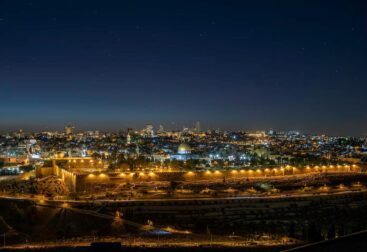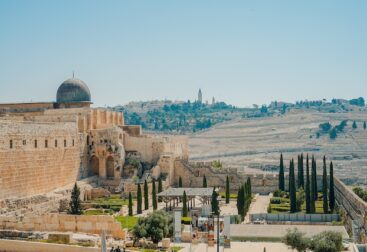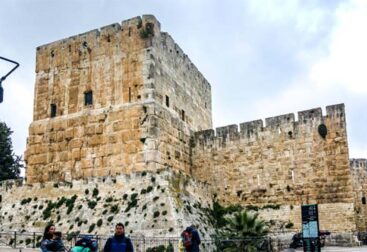Jerusalem is a city steeped in history, and its demographic story is a complex and fascinating one. From its earliest known settlements to the present day, Jerusalem has been home to numerous peoples and cultures, making it one of the most diverse cities in the world. This article will explore the demographic history of Jerusalem, tracing its growth from ancient times to the present day. It will also examine the effects of different waves of migration on the city’s population.
The earliest known settlement dates back to 4500 BC, when a small farming community was established in the area. During the Middle Bronze Age, from 2000 to 1500 BC, he experienced an influx of settlers from Canaan and Egypt. This period saw the growth of a fortified city with a distinct cultural identity.
Jerusalem has a complex history of being conquered by various powers, leading to a diverse population with distinct identities that have not always aligned with the ruling power. Although participating in civic responsibilities, these groups often identified as distinct national groups despite their shared citizenship in the kingdom and empire. The Ottoman Empire implemented the millet system, granting minority groups the ability to govern themselves within a larger framework. This approach enabled these groups to retain independence and avoid assimilation into other religious and national factions. Some Palestinian residents of the city prefer to use the terms Maqdisi or Qudsi to refer to themselves as Palestinians.
Historical population by religion
The city’s complex religious landscape has shifted over the centuries as different powers have wrested control of the city from each other.
In ancient times, he was inhabited by Canaanites, followed by Jews during the reign of King David in the 10th century BCE. Over time , the city became a center of both Judaism and Christianity, with an increasing presence of Muslims during the Islamic period beginning in 637 CE.
In 1517, Jerusalem fell to the Ottoman Empire, who soon implemented the millet system which allowed religious minorities to govern themselves under Muslim rule. This enabled the separate Christian and Jewish communities to coexist peacefully for centuries. During this period, population was predominantly Muslim, with Christians and Jews making up the minority.
In the late 19th century, Zionism began to take shape in Europe as a movement of Jewish national liberation. This period marked a dramatic shift in Jerusalem’s demographic makeup as Jews began to immigrate to the city in large numbers. By 1947, the population of was divided between Arabs 60 %, Jews 37%, and other religious groups.
Today, the population of Jerusalem is roughly 38% Jewish, 37% Muslim, 14% Christian, and 11% Other. This diverse population continues to live in relative harmony despite ongoing political tensions between Israel and Palestine over control of the city.
Archaeological excavations and population
Archaeological excavations have revealed a long and complex demographic history. The city has been inhabited for at least 5,000 years, and its population has fluctuated significantly over the centuries due to wars, occupation, disease and natural disasters. According to archaeological evidence, the first inhabitants of Jerusalem were Neolithic people living in small villages near the city around 7000 BCE. From that time until the late Bronze Age, the city’s population has grown steadily, reaching an estimated 10,000-15,000 people in 1000 BCE.
The population suffered a major decline during the Iron Age between 1000 and 586 BCE when it was conquered by different powers including the Babylonians and Assyrians. Following its conquest by the Romans, he experienced a period of rapid growth as pilgrims and other settlers arrived from all over the Roman Empire.
Following the Ottoman conquest in 1517, the city experienced another period of growth as new immigrants arrived from surrounding areas. By the early 20th century, Jerusalem’s population had grown to around 60,000 people.
Today they is estimated at over 900,000 people, making it one of the most populous cities in Israel and the Palestinian territories. Despite the tumultuous history of its inhabitants, town continues to be a vibrant and diverse city where people of all religions can live side by side.
Archaeology in modern-day Israel is often characterized by a subjective approach, where ancient cities are identified as biblical based on various criteria, and given names according to the Bible due to their presumed presence in the area, as per the perspective of archaeologists. When a non-specific discovery is made, like in Jerusalem, attempts are made to find explanations for the result. It is not possible to modify historical events to fit into fictional narratives as the accuracy of history may be compromised.
Population of Jerusalem at the Time of Jesus Christ
The population of town at the time of Jesus Christ is a difficult statistic to accurately determine. It is thought that the city was home to approximately 30,000-50,000 people during this period. These estimates are based on archaeological evidence, writings from the time, and various other sources. Despite its relatively small size compared to many other cities in the region at the time, he was a major center of Jewish culture, with a large population of religious scholars and an important temple.







